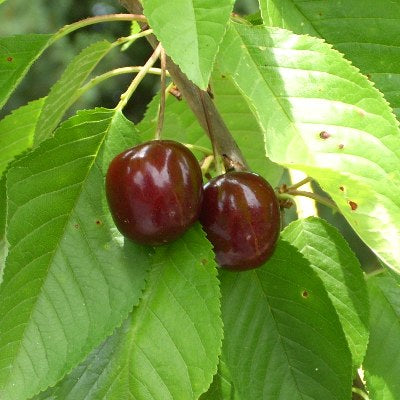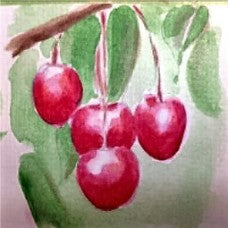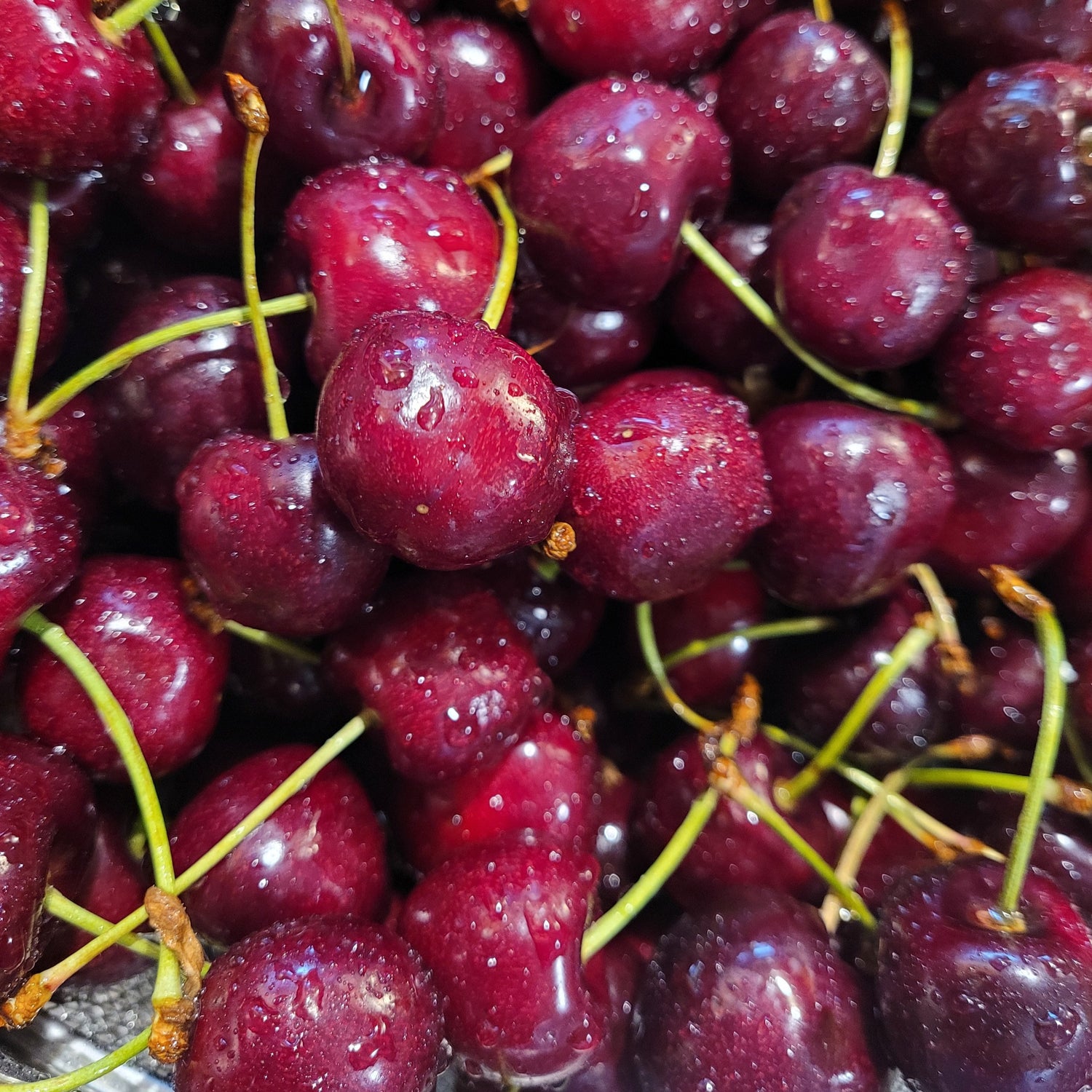Sweet Cherry Trees
Prunus avium
Sweet cherries provide lovely sweet treats that are best enjoyed right off the tree! These tall trees are also quite attractive in spring when covered in a profusion of lovely white flowers.
Some sweet cherries are self-pollinating and some need two different varieties for pollination - we have noted which is which in the variety descriptions. Otherwise, two different varieties are required. Sweet cherries and sour cherries do not pollinate each other.
Sort by:
3 of 18 products
3 of 18 products
History: Compact Stella was developed at the Brookhaven National Laboratory in New York where dormant Stella scions underwent X-ray irradiation in 1964. This caused a mutation to occur, creating a cherry tree that was smaller in stature when fully grown than regular Stella cherry trees. In 1973 this smaller version of Stella was given the name Compact Stella.
Why We Grow It: Compact Stella sweet cherry trees bear very dark red heart-shaped fruit that is of high quality for fresh eating, and equally well-suited for canning, drying, or freezing. This compact version of the popular Stella sweet cherry is great for anyone with limited space. The typical mature height is 8-10 feet (2.5-3.0m), though they can reach up to 12 feet in optimal growing conditions.
History: Lapins (aka Cherokee) was developed at the Summerland Research Station in British Columbia by Latvian agronomist Karlis Lapins, an important figure in the development of self-pollinating sweet cherry varieties. He created Lapins by crossing Stella and Van sweet cherries, and although the variety was released in 1983 after he retired, it was named in his honour. The variety was also awarded the Royal Horticultural Society's Award of Garden Merit. Although quite popular when it was first released, Lapins have since been supplanted by other cherry varieties due to their popularity and its inconsistent quality when shipped.
Why We Grow It: These lovely deep purple cherries are quite similar to Bing. They have a pleasant, mild flavour and can be used for fresh eating, cooking, and canning. The fruit is resistant to cracking and the tree grows well and begins bearing fruit a little earlier than other varieties.
History: Skeena was developed at the Summerland Research and Development Centre in British Columbia in 1976 as part of an initiative to create a high quality cherry that ripens later in the season than other varieties. It is a cross between several self-pollinating varieties and was introduced in 2000.
Why We Grow It: These dark red cherries are often considered an improvement over Lapins with their larger size, good firmness, and general ease of harvest due to the spreading way the tree grows. The flavour is sweet with a touch of acidity. The tree itself grows vigorously and tends to start bearing fruit at a young age.




